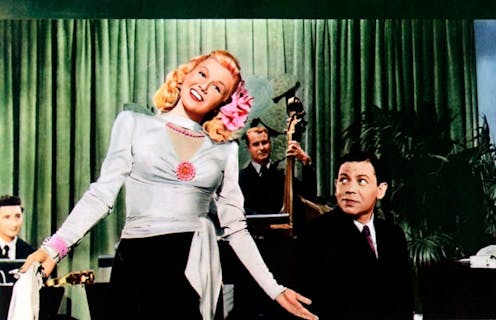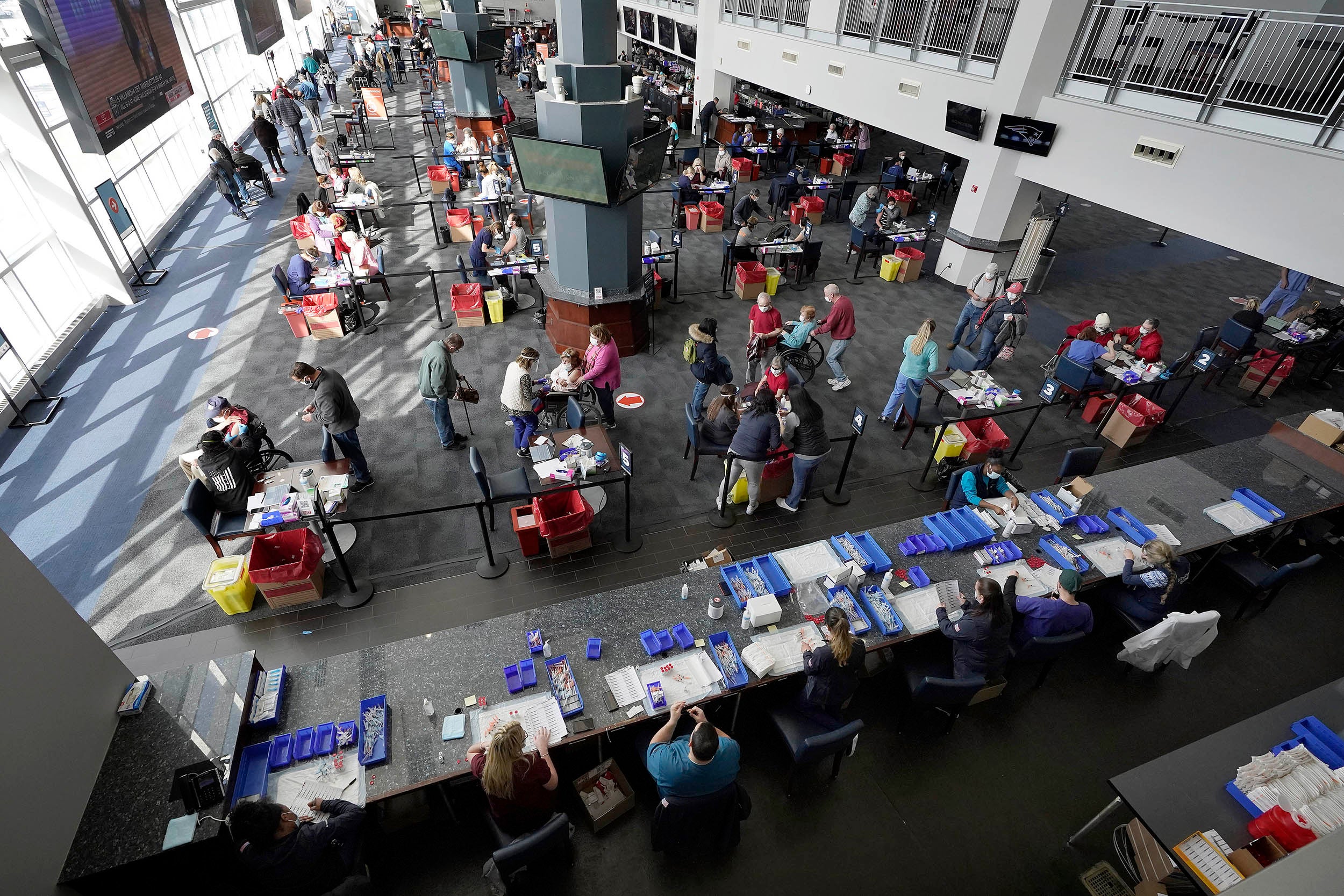Coronavirus: five musicals chosen by a musicologist to keep you going during lockdown
Nothing passes the time like a singalong to some classics from the Golden Age of Hollywood.
March 20, 2020 • 8 min • Source

In the golden age of Hollywood, people turned to musicals for comfort and distraction. To watch and listen to Ann Miller or Doris Day perform Irving Berlin’s song Shakin’ the Blues Away in their respective appearances in Easter Parade (1948) or Love Me or Leave Me (1955) is to put our own cares and woes on hold – if just for a minute – while we respond to their charm and talent, as well as the sheer kinetic energy of their performances.
And whether it’s Louis Armstrong and Bing Crosby duetting in High Society (1956) or the virtuosity of the Nicholas Brothers’ dance routine in Stormy Weather (1943), the movie musical has an enduring ability to soothe our minds and engage our brains. These were the brilliant products of the “Dream Factory” – as Hollywood was known during the studio era, when teams of composers, performers, choreographers, directors and designers were paid big salaries simply to produce several uplifting musicals a year.
With the resurgence of the movie musical since Moulin Rouge! (2001) and the popularity of La La Land (2016) and The Greatest Showman (2017) showing that the musical is once more a viable commercial genre, here are five older screen musicals you may not have come across before – mood-lifting classics with stars including Gene Kelly, Judy Garland and Fred Astaire to keep us all engaged at a time of turmoil.
I Love Melvin (1953)
I was thrilled when the BFI chose to screen this little-known MGM movie during its recent “Musicals!” festival. Following the success of Singin’ in the Rain (1952), MGM brought two of its stars back together, but in a different configuration: this time, Debbie Reynolds and Donald O’Connor played the lovers. And from the beginning, it’s clear that this is no B-movie, even if few people have heard of it nowadays.
It’s partly filmed on location (including sequences in New York’s Central Park) and the production values are high. What I’ve always loved about the movie is the fact that it’s a heavily tongue-in-cheek satire of Hollywood, particularly of the musical. Look for example at the duet We Have Never Met (As Yet), available on YouTube, in which the writers lampoon the Hollywood “meet cute” by having Reynolds and O’Connor bump into each other while singing about how they haven’t yet met their true loves (when they actually have).
The score, by Josef Myrow and Mack Gordon, is as charming as anything MGM produced – and Gene Kelly, who is not in the movie, nevertheless makes his presence felt when men in the chorus wear Kelly masks in a slightly surreal dance sequence.
Roberta (1935)
Fans of Astaire and Rogers who have never seen it should drop everything and watch Roberta immediately. It’s a liberal film adaptation of a successful Broadway musical of the same name, but the addition of the popular team of Fred and Ginger automatically impacted on the story and score.
Jerome Kern’s songs are top notch and include the standard Smoke Gets in Your Eyes, which has been covered by everyone from Cher to Miles Davis. The famous dancers play former sweethearts and hilarity ensues when Fred discovers that Ginger is living in Paris, pretending to be a countess.
The movie is almost as good as Top Hat, which was released the same year, and Fred and Ginger are at the top of their game – the movie deserves more attention. But there’s a good reason why it has never entered the canon: MGM bought the movie from RKO in the 1940s and remade it as the second-rate Lovely to Look At in 1952, suppressing the 1935 version for several decades.
Romance on the High Seas (1948)
Although her name continues to resonate through the years, Doris Day remains, for my money, the most underrated performer from the golden era of the movie musical. Indeed, it seems to me that her versatility has never been fully recognised: compare her gut-wrenching portrayal of distress at discovering her son has been kidnapped in Hitchcock’s The Man Who Knew Too Much (1956) to her lively turn singing The Deadwood Stage as Calamity Jane (1953) and you can instantly see that this is someone of unusual ability.
But for one of her sunniest performances, I recommend her debut movie Warner Bros’ Romance on the High Seas (released in the UK as It’s Magic – the title of one of the outstanding Jule Styne songs in the score). Day was working as a band singer when she was called in to audition for the movie, replacing the pregnant Betty Hutton, who was a well-established star.
While she was an unknown compared to several other actors in the movie, who include Janis Paige, Jack Carson and Oscar Levant – not to mention popular character actors Eric Blore (Top Hat) and S. Z. Sakall – Day completely steals the show. Watch as a star is born right before your eyes.
On a Clear Day You Can See Forever (1970)
It’s not to everyone’s taste – and again it’s based on a Broadway show, so not technically an original movie musical – but I’ve always had a soft spot for Barbra Streisand’s third film, On a Clear Day You Can See Forever, released by Paramount in 1970. It was extensively rewritten for the screen so that Streisand appears in almost every song, and the score by Burton Lane and Alan Jay Lerner is full of catchy tunes and hilarious lyrics (Come Back to Me is a particular joy).
Vocally at her early best, Streisand plays two characters: the present-day American Daisy Gamble and her 19th-century English alter ego, Lady Melinda Winifred Waine Tentrees. Daisy believes she is the reincarnation of Melinda and when she goes into psychoanalysis to try and rid herself of her nicotine addiction, her therapist discovers – and falls in love with – Melinda.
While the film is overlong (even after several songs were cut – and the film footage on those songs has apparently never been discovered), veteran director Vincente Minnelli, of An American in Paris and Meet Me in St Louis fame, offers some innovative sequences in this late-career movie. Watch out for a young Jack Nicholson, who plays Streisand’s stepbrother.
Summer Stock (1950)
No list of cheering musicals would be complete without Judy Garland – and Gene Kelly and MGM’s Summer Stock is the ideal climax to our survey. Garland’s ruthless treatment by MGM (as depicted in the recent film Judy) led to her becoming an unreliable figure in the late 1940s.
Due to exhaustion, she had to be replaced by Ginger Rogers in The Barkleys of Broadway (1949), which had been designed as a follow-up to the Garland-Astaire classic Easter Parade (1948). She was also removed from the screen adaptation of Annie Get Your Gun after filming several numbers and pre-recording most of the soundtrack.
But don’t overlook her brilliance in Summer Stock (1950), in which she plays a farm owner who allows Gene Kelly and his troupe to rehearse on their property in return for completing chores. The dazzling score by Harry Warren – best known for 1930s classics such as 42nd Street – is supplemented by Harold Arlen’s Get Happy, in which Garland wears her iconic tuxedo costume. You get 109 minutes of happiness: what’s not to love?
Dominic McHugh does not work for, consult, own shares in or receive funding from any company or organisation that would benefit from this article, and has disclosed no relevant affiliations beyond their academic appointment.

